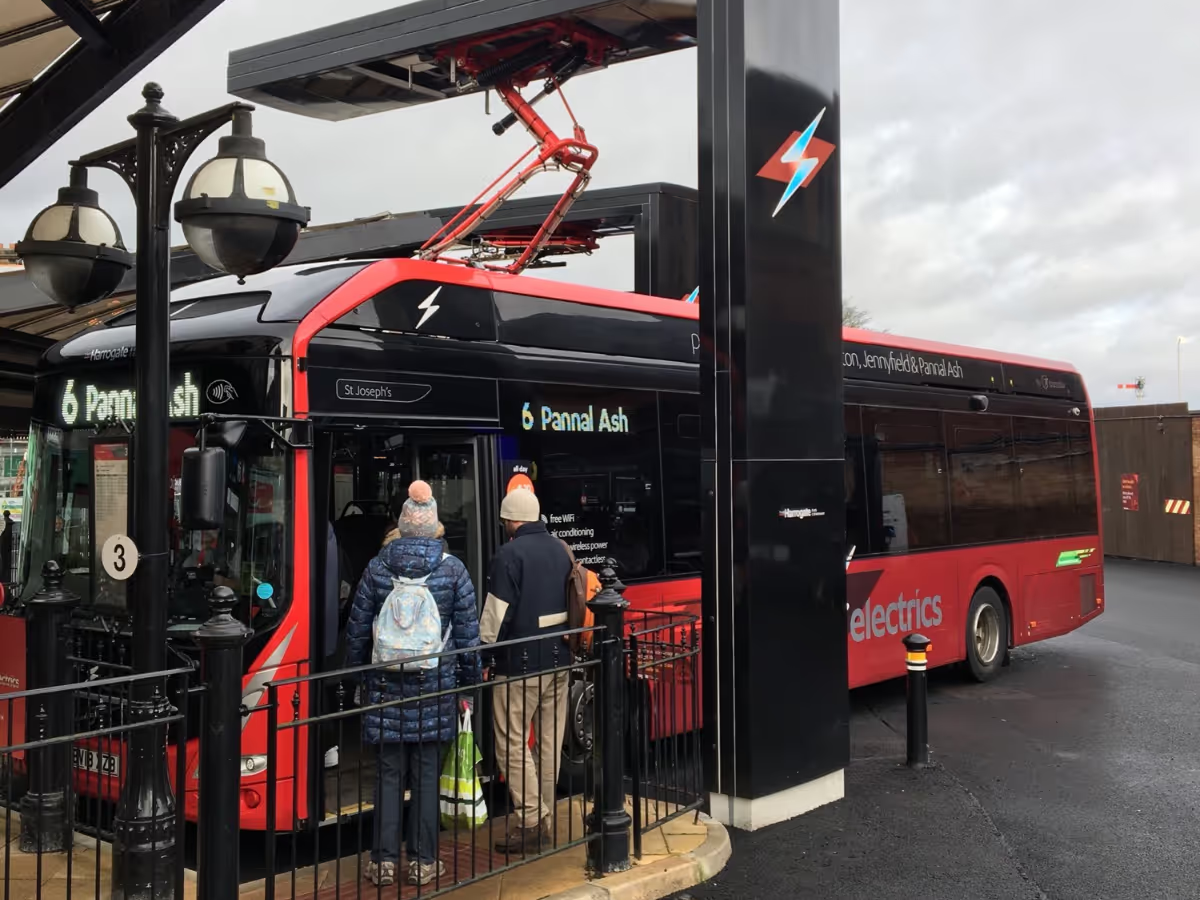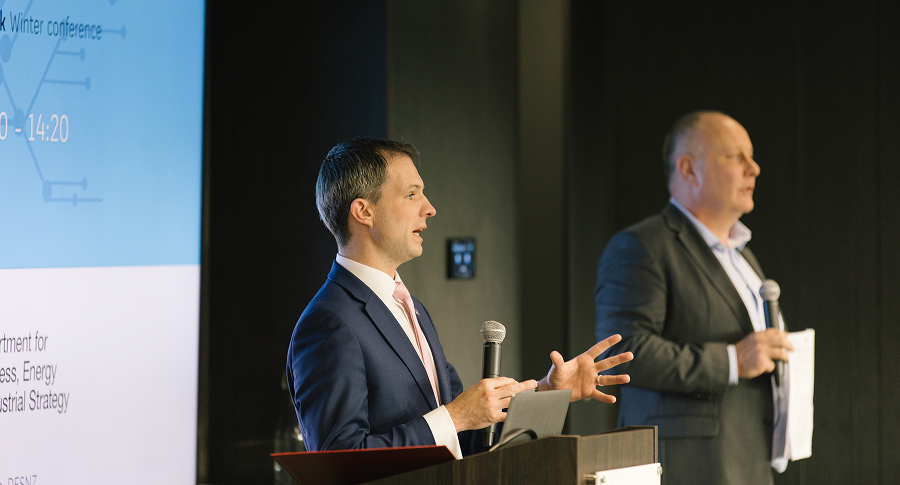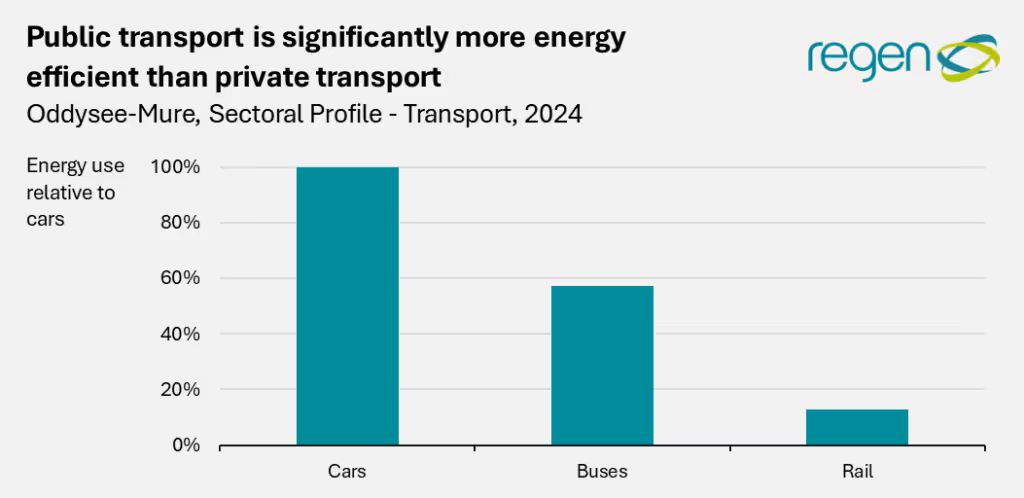In this insight piece, graduate energy analyst Andrew Brand explores the barriers to greater use of public transport in the UK – and considers how an Integrated National Transport Strategy might encourage a shift.

In this insight piece, graduate energy analyst Andrew Brand explores the barriers to greater use of public transport in the UK – and considers how an Integrated National Transport Strategy might encourage a shift.

Last autumn the UK government launched a call for ideas on how people interact with the current transport network and how it can be improved. The stated aims for the development of an ‘integrated national transport strategy’ (INTS) are:
Higher usage of public transport has the potential to greatly benefit the energy system, easing pressure on the electricity grid with lower overall demand in more centralised locations.
Across the UK, there is a clear preference for private transport, with an average of 78% of trips of more than one mile taken this way. Just 9% were taken by public transport and the remaining 13% by active travel, including walking and cycling.
The reasons why we favour cars over buses and trains vary and can be difficult to define. However, data from Transport for London indicates that ease and convenience are the primary factors, followed by travel times and comfort.Some data even suggests that private cars are cheaper to run.

Whether it’s the one that arrived an hour late, the one that was inexplicably early or the one that never showed up at all, buses are often a topic of frustration. The Big Issue details problems for people commuting from rural towns, including bus shelters with no roofs, inconvenient timetables, frequent late arrivals and long waits during transfers. This unreliability and poor connectivity is pushing rural communities towards car ownership, with Friends of the Earth noting ‘strong geographic disparities’ in a report on Britain’s declining bus services.
Trains don’t fare much better. In 2019, the Trade Union Congress reported that, in the last 10 years, rail fares have risen twice as fast as inflation. Personal finance and mortgage adviser Money Nest compared the cost of car operation with a train journey for several routes in the UK, finding that driving is cheaper than a peak train ticket 50% of the time, even accounting for wear and tear. Additionally, trains have a cancellation rate of 4.2% and services arrive on time just 68% of the time.
A 2023 Greenpeace assessment of 30 public transport ticket systems placed the UK 15th, highlighting a lack of unified ticketing system, as well as positive measures such as zero VAT and free transport for elderly and disabled users.Capital cities were also individually assessed, with London coming in 29th out of 30. High-scoring countries had discounts for vulnerable groups and/or single tickets which cover all regional trains and/or buses.
A TUC cost comparison with Europe found that comparable annual tickets cost £3,248 in the UK and only £442 in Italy. Germany’s integrated transport system is also affordable, with the Deutschland-Ticket costing €59 a month (approximately £49) and covering all regional transport including local trains, buses and trams in the country. Comparing regional, company-specific, monthly bus passes in the UK highlights the soaring costs of public transport.

While public transport in the UK faces many challenges, it offers potential benefits in the energy transition. Moving people from A to B requires energy, and several factors dictate how much is used. The most important is the number of passengers in the vehicle. Analysis from Odyssee-Mure looked at the energy use per passenger-kilometre for cars, buses and rail according to their occupancy rates in Europe. The results show that buses use 43% less energy than cars, while rail uses 87% less.

Estimating demand reduction from such a modal shift is difficult, but it is a factor given weight in the Climate Change Committee’s sixth carbon budget transport assessments, which determined that 17-24% of car journeys could be shifted to buses by 2050, with public transport accounting for a 12-34% reduction in car miles.
Shifting to public transport has more potential benefits than just reducing total energy demand. Electric vehicle (EV) chargers are going to be a significant driver for grid investment, even factoring in flexible operation to avoid peak time usage. While there is little evidence of the direct benefit that modal shift can provide to the grid, Regen believes this can be quantified. In an upcoming piece, we will share our modelling and insights on such potential impacts.
Significant weight should be given to responses to the government’s call for ideas about what can be done to improve public transport for those who currently use private transport to get around. Campaign for Better Transport published an article in 2023 stating that 79% of drivers would use public transport if it were better.
The government has identified a few key issues relating to public transport improvements. One of the last questions in the call for ideas is a multiple choice which asks how the transport network can be better joined up. Response options include better interchanges, journey information and signage, aligning timetables and having one ticket across a whole journey.
This is encouraging to see, but there are other challenges to tackle.
Cost is a major factor in how people travel and, as Greenpeace identified, the UK is lagging behind other countries in several areas. Although advance single tickets in the UK can be cost-effective, especially with a railcard, they have drawbacks. They are non-refundable, inflexible and must be booked in advance, which means people facing unexpected circumstances are unfairly punished with higher fares.
Improving timetables and signage without taking steps to increase reliability also risks continuing to turn people away. Buses and trains arriving at their destinations on time are essential if people are making onward journeys with a different service. The call for ideas doesn’t address reliability directly in any questions.
Despite this, the INTS has the makings of a great step forward for public transport in the UK. However, it is unlikely to be the whole solution. Following the publication of the INTS, the government should move towards focusing on methods to drive down the cost of public transport and improve the reliability of services. If handled well, this could drive forward progress to net zero.
The consultation closes on 20 February 2025 and can be accessed here.
Sign up to receive our monthly newsletter containing industry insights, our latest research and upcoming events.